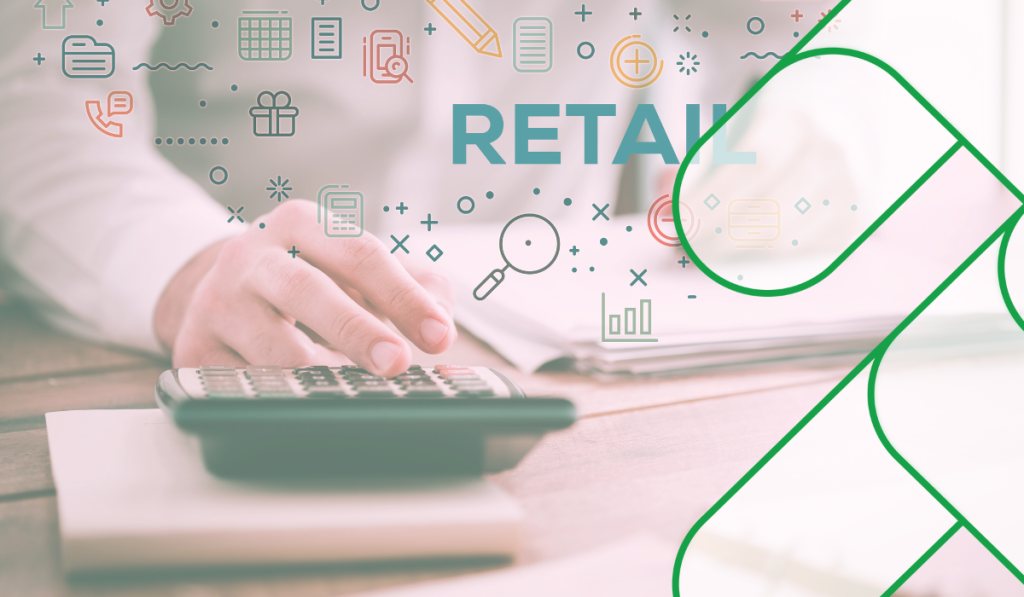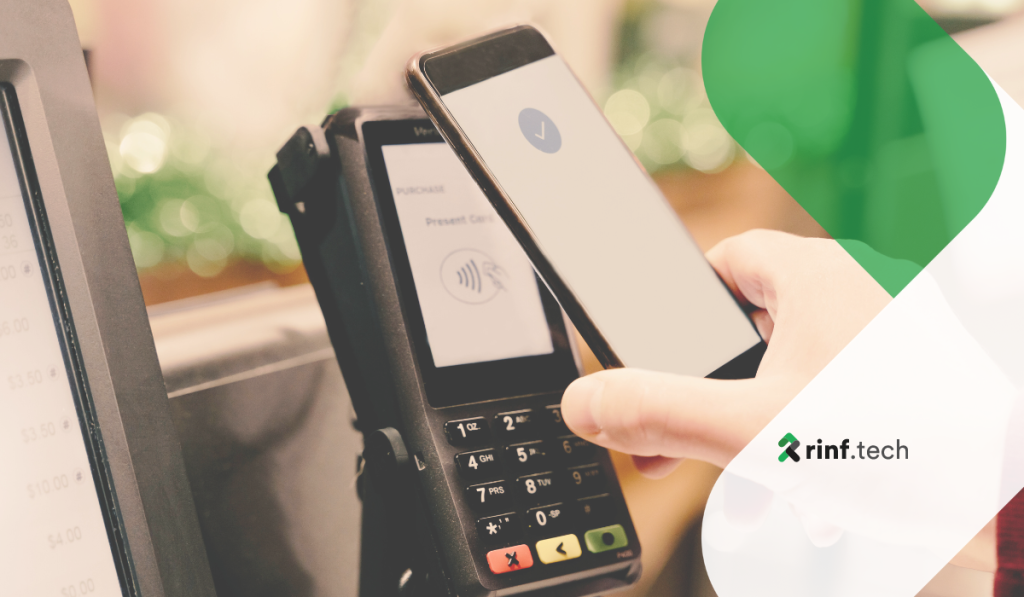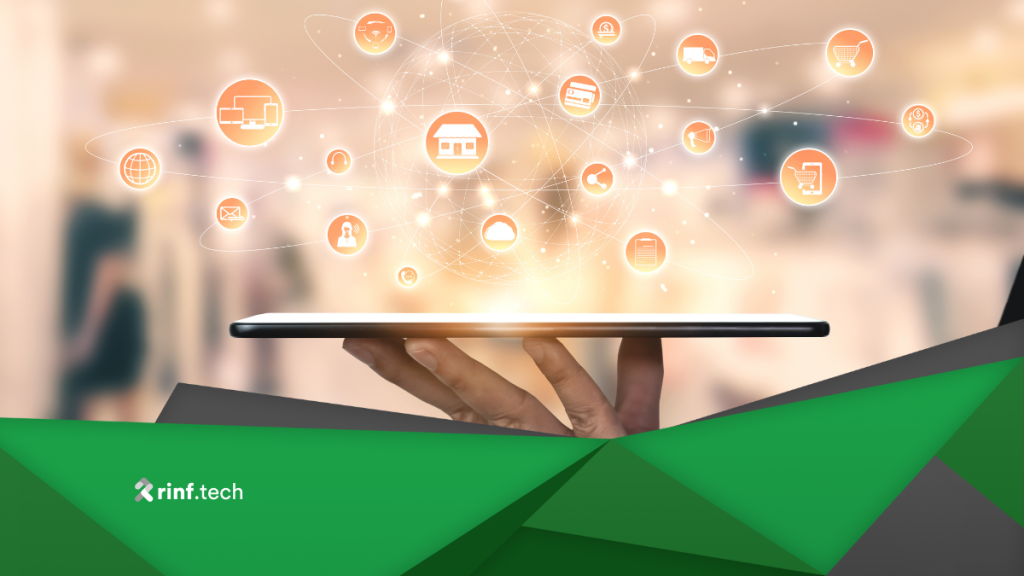
Omnichannel Retail: Technologies, Challenges, and Opportunities
This article explores omnichannel retail. It covers its advantages, the technology driving it, the implementation challenges companies face, and future trends.
According to Statista, the Top 5 Technologies that business leaders consider to be quite important in accomplishing their business goals are:
rinf. tech‘s firsthand experience building custom solutions for retail automation and digital transformation shows that combining these technologies yields the best results for retail organizations. They help companies significantly improve their top-line growth and increase bottom-line savings while enhancing customer loyalty.
Amazon’s data-driven recommendation engine drives 35% of all sales. It collects shopper-related information when they use the website, including preferences, search history, wish list, and shopping cart, making it possible to predict what a shopper is more likely to buy. The algorithms consider the delivery address of registered customers, which allows you to choose the nearest warehouse and reduce delivery time and related costs.
Another retail giant, Target uses data analytics to predict pregnancies by analyzing women’s shopping behavior. Thus, the retailer can send personalized offers to customers and stand out from the competition.
Carrefour Romania uses rinf.tech’s AI-based robot to scan items and price tags on the shelves and generate automated alerts for out-of-stock replenishment and to avoid price discrepancy.
Collecting customer data allows retailers to know their target audiences’ preferences and shopping habits, taking any marketing campaign to the next maturity level.
Gathering customer feedback and consumption patterns can help retailers determine what works best, improve customer service, and promptly respond to issues and challenges.
Retailers can use data about their customer social media activity and online behavior to determine which products get the most attention. In addition, they can analyze the mood of the discussion around the subject. AI-based predictive analytics solutions can help determine which products will generate the most interest from the audience.
Retailers can conduct A/B testing to find out which prices work best. This process can be automated with machine/deep learning and augmented reality (AR). With big data, retailers can use a dynamic pricing strategy to analyze the market and adjust accordingly. In a dynamic pricing strategy, algorithms study competitor prices and current inventory levels and select the best price that allows retailers to remain competitive and generate revenues.
With predictive analytics and real-time product information, retailers can avoid stockouts, optimize warehouse space to make the most popular items easily accessible, and more. It also helps ensure product availability, which is especially important during high-demand seasons, such as Black Friday and the holiday season when stocks run out.
Online retail store visitors leave digital footprints. Every click and every interaction on the site generates information about the buyer. When registering or making a purchase, their names, addresses, and additional information are revealed. Digital retailers use big data and intelligent algorithms to discover consumer needs, predict shopper behavior, recommend products, and optimize inventory to minimize storage costs and delivery times.
Recently, digital players such as WeChat in China and Amazon GO in the US and Europe have begun to connect online and offline: they create automated supermarkets with self-checkout that offer an unprecedented level of shopping experience and generate additional data about shoppers.
Retail business owners do not need to watch this development with passive awe. A host of technologies is already available to help brick-and-mortar stores collect valuable information about their customers, allowing them to improve the customer experience, retain customers, and ultimately increase profits. Used smartly, transparently, and unobtrusively, the technologies described below make a physical store almost as rich in data as a website.
The information gained from tracking a customer journey through a store can be used for many purposes, from optimizing store layout to deciding on additional placements to adjusting offers based on the time of day.
For a proof-of-concept, Nuremberg Institute for Market Decisions (NIMD) has developed a typology of shopping trips based on path-tracking data collected over one year in a German supermarket, using UWB antennas that monitor battery-operated tags implemented in shopping carts and baskets. Researchers identified eight different shopping trip types based on characteristics like distance covered on a shopping trip, speed, and the proportion of trips spent in specific areas of the store.
According to NIMD, “unstructured refills” are characterized by a long distance, whereas “single purpose” and “last-minute trips” are attributed to a high speed. Combined with sales and survey data, more detailed behavioral differences between segments can be determined. Such data allows retailers to create targeted and highly personalized recommendations for specific segments, including reminders for abandoned items, optimized category management and secondary placements for single-purpose trips, and special product aisles for last-minute shoppers.
One of the leading European retail companies once turned to us for help building a custom AI and Big Data solution to solve their challenges, namely:
Using CCTV cameras and video analytics servers (including Facial Recognition, Queue Detector, People Counter, Activity Visualizer and Analytics system package for retail), our software engineering team built a solution to map each client’s in-store journey, identify promptly their needs and shopping behavior and solve even the most sophisticated requests. In particular, we employed:
This custom retail analytics application helped our retail client:
customer identification at the point of sale (POS)— via loyalty cards—is no longer good enough for retailers. They want to know who the people in the store are before they make a purchase to provide a personalized shopping experience. However, most stores don’t have the luxury of recognizing every face that walks through the door.
This is where facial recognition software can step in by scanning thousands of checkpoints on a person’s face to identify their unique “faceprint” (just like we all have our own unique fingerprints).
Identifying customers in this way gives your employees insight into the types of products customers can purchase and how much they can spend so they can roll out a VIP service for these high-value customers.
Facial recognition technology can help retailers better respond to customer needs by deciphering any changes in your customers’ emotions and then notifying your employees so they can tackle upset or confused customers right away.
Another obvious value of this technology is loss prevention, which is especially useful given that US retailers lose almost $50 billion annually due to theft (shoplifting accounts for 36.5% of these losses). Your security staff may not notice a stalking shoplifter, but the software certainly can. It can compare faces against a database of known shoplifters to provide proactive theft prevention. Facial recognition in retail reduces shoplifting by 34%. This means better value for your customers and more money in your pocket.
All this may seem rather Orwellian. While facial recognition is a way to give people the personalized experience they want (for example, 41% of consumers expect representatives in a brand’s physical store to know what they’ve bought online), there will also be shoppers who find it a flagrant violation of their private life. Thus, to address any ethical issues, facial recognition should only be used if someone has explicitly consented (instead of, for example, using assumed consent).
Shoppers can sign up for the scheme and use their smartphones to scan their faces or maybe even visit a special booth in the store. Whatever the mechanism, it is vital that retailers maintain trust by giving shoppers control of the experience.
Automatic analysis of customer faces captured on the camera allows retailers to make conclusions about emotional states in real-time. Combined with eye-tracking technology, retailers can, for example, determine a customer’s need for information and support.
Online shopping website providers can easily use A/B tests to optimize customer experience and turnover. It is much more difficult and expensive for regular stores to experiment with display, assortment, or prices. VR offers retailers an environment for controlled experiments. For example, you can quickly and efficiently compare different store layouts in VR.
A big advantage compared to real A/B tests is a high degree of experimental control over the situation and the ability to obtain comprehensive information about user actions and perception. Our experience shows that VR is well suited for predicting purchasing decisions.
In collaboration with the Karlsruhe Institute of Technology (KIT) and CITEC at the University of Bielefeld, a team of researchers used a collaborative choice-based solution to compare choices made in an online shopping environment on a desktop screen with those made in front of a fully immersive 3D supermarket.
Designing and programming 3D models for VR still requires a lot of time and money. However, subsequent adjustments to existing virtual worlds can be made more easily once programmed.
Perhaps the flagship technology for creating the physical future comes in AR/VR. And the customers seem to agree. According to one report, nearly two-thirds (61%) of American adults surveyed said augmented reality has impacted where they shop.
The COVID-19 measures have played a huge role in boosting demand for augmented reality systems, enabling shoppers to adopt a try-before-you-buy approach in absentia and helping to replicate and even evolve the online store experience.
IKEA, for example, has created an app called “Ikea’s Place” that allows shoppers to access 3,200 IKEA products using the live view feature on their smartphone and use AR functionality to see what certain items will look like by placing them virtually in rooms of your house. home before making a purchase.
AR also promises to radically change the in-store experience. In fashion retail, smart mirrors will provide a previously unthinkable level of interactivity. Shoppers won’t even have to undress to try out a brand new wardrobe, with virtual fitting rooms allowing them to layer items and outfits on top of each other and get friends’ opinions by sharing images on social media.
Oak Laboratories uses similar technology to create interactive locker rooms. Smart mirrors recommend other products that shoppers often pair with products shoppers try, helping to complement their outfits and providing an in-store online shopping experience. This process also produces a lot of rich data. For example, you can see the conversion rates for certain items from the fitting room to checkout and adjust products and inventory accordingly.
According to Boston Consulting Group, the global robotics market will reach $87 billion by 2025 – more than half likely to be in the retail market. Meanwhile, according to market research firm Tractica, the size of the global customer service robot market is projected to exceed $87.97 million by the end of 2022.
Imagine sales robots with built-in 3D scanners that help them recognize products and even guide your customers to products as they move around the store. What happens if a customer has a question that the robot cannot answer? No problem. The robot simply starts a video conference with an employee who can help him as needed.
Robots can also be used in the supply chain to check inventory, identify pricing errors, and look for misplaced items. The data they collect helps improve the customer experience by optimizing store layouts and processes.
Robotics has already changed how distribution centers work. Retail giant Amazon reportedly uses more than 100,000 robots to move goods around warehouses and group items to fulfill orders, resulting in a 20% reduction in operating costs. Now technological advances in retail are also starting to robotize last-mile delivery. Amazon is known to be testing drones in preparation for the launch of Amazon Prime Air, a service that promises to deliver goods from order to delivery in 30 minutes or less – as long as they weigh less than 5 pounds.
Alibaba has announced a last-mile delivery robot called G Plus that it plans to deliver packages, groceries, and food in residential areas. Customers won’t sit idly by waiting either – they’ll be able to control the entire journey through their smartphone.
By 2022, voice commerce sales are expected to reach $5 billion in the UK and $40 billion in the US.
Since Apple’s Siri entered the scene, voice assistant technology has skyrocketed in popularity, and now it’s even begun to break out of smartphones and spread to other devices. One survey showed that 60 million people now have at least one smart speaker system in their homes. For many, researching a product, comparing prices, and now even buying a product are all just a few words.
Walmart capitalized on this development by creating the Walmart voice ordering service. Shoppers can use any Google Assistant or Siri-enabled device to add items to their shopping cart. Shoppers just need to say, “Hey Siri/Google, add to Walmart” and name the product. The goods are then packed and delivered by the method chosen by the customer.
7-Eleven Inc. also launched a voice order feature on its 7NOW Delivery app. Customers can open the 7NOW app by saying “Hey Alexa! / OK, Google! Open 7NOW” and similarly place items in your shopping cart using only voice commands. After payment, the purchase is delivered to customers within 30 minutes.
The era of anonymous shoppers is over. Brick-and-mortar stores must use data to create personalized customer experiences and deliver new data-driven services. Otherwise, they risk falling behind new digital players who are investing in physical stores using data technologies, AI/Computer Vision, VR/AR, IoT, and other types of breakthrough tech.

This article explores omnichannel retail. It covers its advantages, the technology driving it, the implementation challenges companies face, and future trends.

A comprehensive overview of how fintech innovations drive significant changes in the retail industry.

In this article, we explore a current retail technology landscape and trends shaping the industry, retail tech use cases, as well as what the future holds for retail tech.